Dorris Motor Company Building (now CIC@CET)
Introduction
Text-to-speech Audio
In 1898, engineer and entrepreneur George Preston Dorris, a native of Tennessee, with childhood friend John French, started the first automobile-manufacturing company in St. Louis: the St. Louis Motor Carriage Company. When French died and his brother moved the company to Peoria, IL, Dorris stayed behind and started his own operation: the Dorris Motor Car Company. His first car, introduced in 1906, was the innovative model the Dorris, which was produced, like all subsequent company models, almost entirely by hand, as opposed to mass-produced cars like the Ford Model T. The demand for this car was so great that the company built a new factory at the corner of Forest Park Boulevard and South Sarah Street, and the company expanded so rapidly that by 1912, it built yet another factory just west of the existing one, transforming the first building into an auto servicing and repair facility. In the difficult years of World War I and thereafter, the Dorris brand essentially priced itself out of the market, and the company went out of business in 1926. The building was then used by the Brauer Brothers Shoe Company for a number of years, then as an office furniture warehouse. It now houses the Center for Emerging Technology (CET), which provides biotech startups with access to specialized facilities, entrepreneurship training programs, support services and funding.
The building was added to the National Register of Historic Places in February, 2000.
Images
Exterior of the Dorris Motor Company building (early 20th Century)
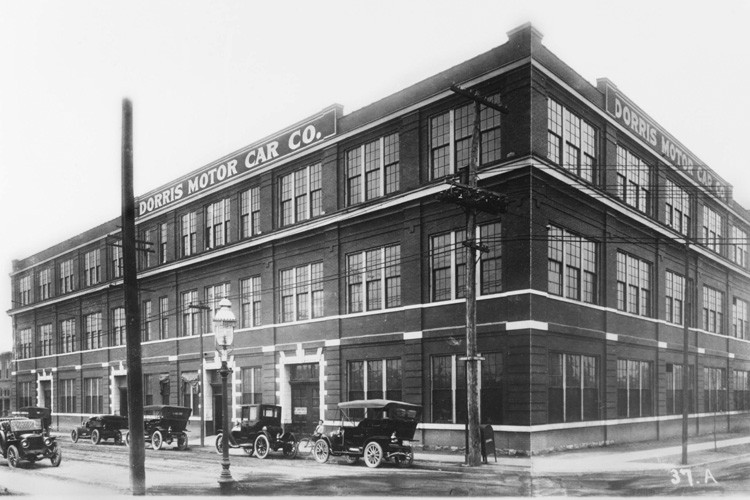
Advertisement for Dorris automobile (1907)
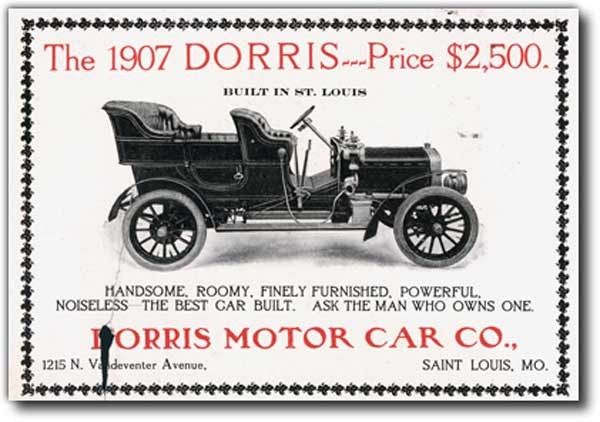
Vintage Dorris car
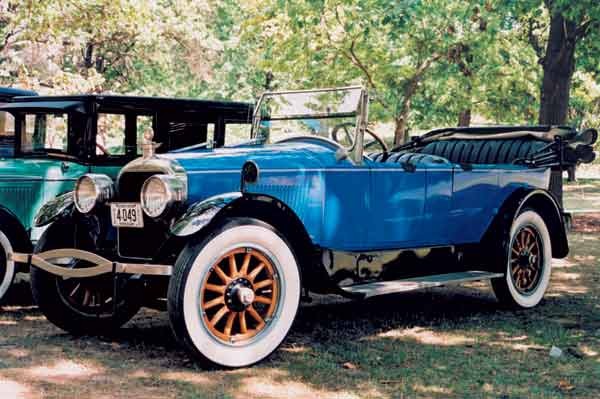
Vintage Dorris truck
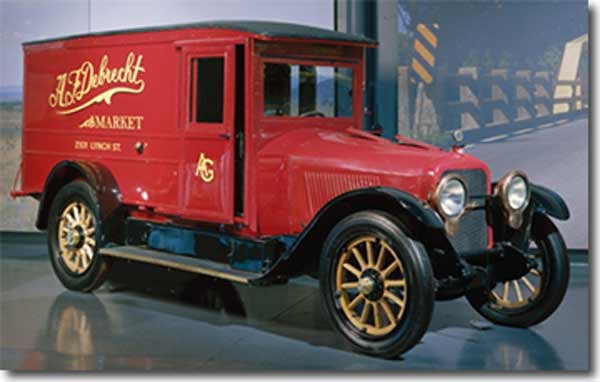
Interior of building (current)
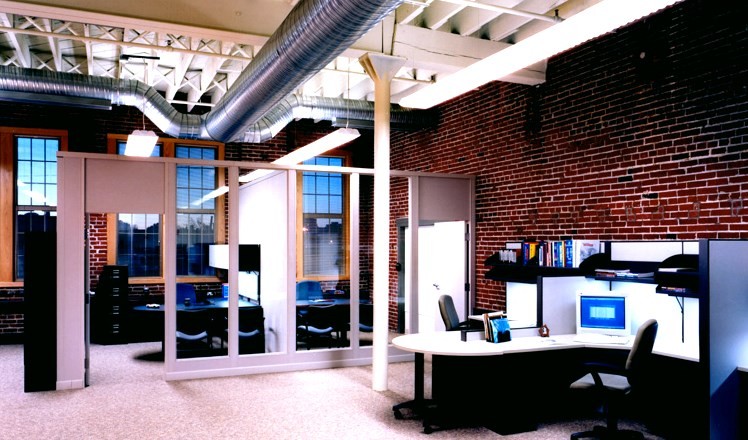
Exterior of building (current)
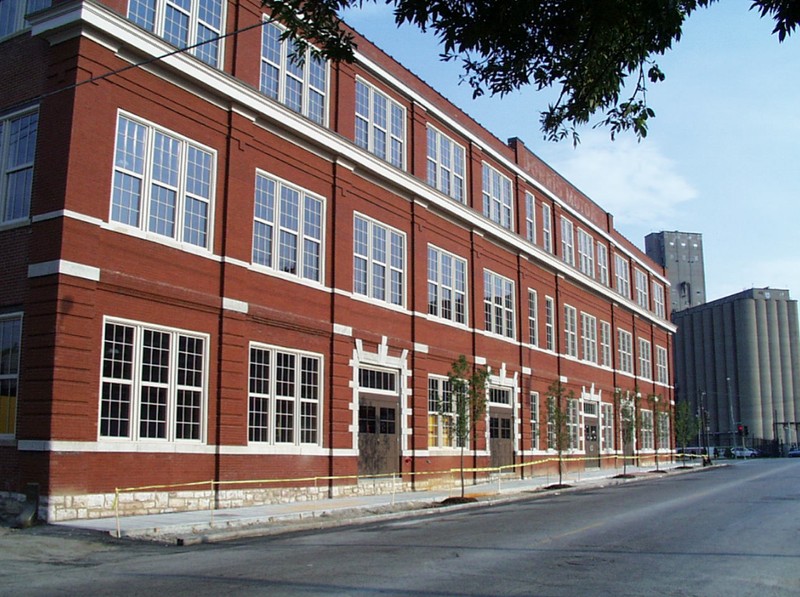
Backstory and Context
Text-to-speech Audio
The engineer and entrepreneur George Preston Dorris, having recently arrived in St. Louis, received an offer from Jesse French, the brother of his friend and partner John French, to be the major investor in their proposed new automobile manufacturing company. There was but one catch: he had to haul a piano across the city without a single automotive breakdown. Today, it seems a simple request... but this was in 1898, and there existed not a single truck in the entire city of St. Louis! Dorris easily solved the problem. He adapted a horseless carriage he had previously constructed into a primitive truck to carry the piano without a hitch, and George Dorris and John French got their money. The two partners then created the first-ever motorcar company in the Gateway City: the St. Louis Motor Carriage Company. This company would change the course not only of the development of the automobile, but of the city of St. Louis itself.
The new company's first model, called simply the St. Louis, was the first car anywhere to include the engine, clutch assembly and transmission all in one unit, as well as the first to include a float-feed carburetor (both features are standard today). When Jesse French decided to move the company to Peoria, Illinois, following the death of his brother, Dorris chose to stay in St. Louis and resigned. With the help of wealthy grocer Henry B. Krenning, he established a new enterprise: the Dorris Motor Car Company, with Krenning as its first president, using the same factory Dorris and French had employed.
Their first car, introduced in 1906, was an innovative, hand-made model called (logically) the Dorris, which won rave reviews at the New York Automobile Show in January of that year. It incorporated a four-cylinder vertical valve-in-head motor with in-line valves - it was the first four-cylinder car ever made - and also used Timken roller bearings and body-to-frame construction. Because of its unique features, sturdiness, hand-crafted production and elaborate design, it was not cheap. It cost $2,500, at a time when a Ford car (which was produced by assembly-line construction) cost less than one-sixth that price. Adjusted for inflation, its price today would be approximately $63,000, about the cost of a mid-range Cadillac. However, demand for the car was so strong that the company built a large, new factory, designed by St. Louis architect John L. Wees.
The structure is a three-story rectangular plan brick building measuring 100 feet by 180 feet and is constructed in the early 20th Century Commercial Style. (The third story was built in 1909.) The two main facades facing Forest Park Avenue and South Sarah Street are ornamented while the south and west elevations are simple and unadorned. The street facades are further accented with a wood and sheet metal cornice between the second and third floor, as well as a slightly smaller cornice of similar design directly below the tile-coped parapet wall. This wall is raised over the three center bays and retains the original "DORRIS MOTOR CAR CO." painted sign.
The company’s slogan for its automobiles was “Built Up to a Standard - Not Down to a Price.” However, the rising retail costs of Dorris' uncompromisingly high-quality cars were not matched by the spending power of the average American consumer at the time. In addition, Dorris refused to change the style of his vehicles to adapt to the times. By 1916, only the truck and bus divisions of the company were still in operation. In 1924, the company dissolved, and in the following year, Dorris established a new bus manufacturing company Dorris Motors Inc., which folded in 1926. Dorris' operations thus lasted only 20 years, producing a total of 3,044 cars and 909 trucks. However, the innovations of his two early car companies had a lasting influence on the development of the automobile. For example, in addition to the development of the all-in-one-unit engine, transmission and clutch assembly, and the float-feed carburetor, Dorris created a new type of speedometer connected to the transmission, rather than the unreliable and dangerous ones that had existed up to that time. In addition, his factories established St. Louis as an automotive center that, for a time, rivaled Detroit.
The building was taken over by the Brauer Brothers Shoe Company for many years, and then by an office furniture warehouse. After that, the building lay idle for a time, until its current use as part as the St. Louis headquarters of the Center for Emerging Technology (CET), part of the Cortex life sciences district in St. Louis. CET selected CIC-St. Louis to manage the Innovation Center’s facilities, which have now been rebranded as CIC@CET. CIC@CET offers wet and dry labs, production and office space, shared equipment, conference rooms and amenities.
The new company's first model, called simply the St. Louis, was the first car anywhere to include the engine, clutch assembly and transmission all in one unit, as well as the first to include a float-feed carburetor (both features are standard today). When Jesse French decided to move the company to Peoria, Illinois, following the death of his brother, Dorris chose to stay in St. Louis and resigned. With the help of wealthy grocer Henry B. Krenning, he established a new enterprise: the Dorris Motor Car Company, with Krenning as its first president, using the same factory Dorris and French had employed.
Their first car, introduced in 1906, was an innovative, hand-made model called (logically) the Dorris, which won rave reviews at the New York Automobile Show in January of that year. It incorporated a four-cylinder vertical valve-in-head motor with in-line valves - it was the first four-cylinder car ever made - and also used Timken roller bearings and body-to-frame construction. Because of its unique features, sturdiness, hand-crafted production and elaborate design, it was not cheap. It cost $2,500, at a time when a Ford car (which was produced by assembly-line construction) cost less than one-sixth that price. Adjusted for inflation, its price today would be approximately $63,000, about the cost of a mid-range Cadillac. However, demand for the car was so strong that the company built a large, new factory, designed by St. Louis architect John L. Wees.
The structure is a three-story rectangular plan brick building measuring 100 feet by 180 feet and is constructed in the early 20th Century Commercial Style. (The third story was built in 1909.) The two main facades facing Forest Park Avenue and South Sarah Street are ornamented while the south and west elevations are simple and unadorned. The street facades are further accented with a wood and sheet metal cornice between the second and third floor, as well as a slightly smaller cornice of similar design directly below the tile-coped parapet wall. This wall is raised over the three center bays and retains the original "DORRIS MOTOR CAR CO." painted sign.
The company’s slogan for its automobiles was “Built Up to a Standard - Not Down to a Price.” However, the rising retail costs of Dorris' uncompromisingly high-quality cars were not matched by the spending power of the average American consumer at the time. In addition, Dorris refused to change the style of his vehicles to adapt to the times. By 1916, only the truck and bus divisions of the company were still in operation. In 1924, the company dissolved, and in the following year, Dorris established a new bus manufacturing company Dorris Motors Inc., which folded in 1926. Dorris' operations thus lasted only 20 years, producing a total of 3,044 cars and 909 trucks. However, the innovations of his two early car companies had a lasting influence on the development of the automobile. For example, in addition to the development of the all-in-one-unit engine, transmission and clutch assembly, and the float-feed carburetor, Dorris created a new type of speedometer connected to the transmission, rather than the unreliable and dangerous ones that had existed up to that time. In addition, his factories established St. Louis as an automotive center that, for a time, rivaled Detroit.
The building was taken over by the Brauer Brothers Shoe Company for many years, and then by an office furniture warehouse. After that, the building lay idle for a time, until its current use as part as the St. Louis headquarters of the Center for Emerging Technology (CET), part of the Cortex life sciences district in St. Louis. CET selected CIC-St. Louis to manage the Innovation Center’s facilities, which have now been rebranded as CIC@CET. CIC@CET offers wet and dry labs, production and office space, shared equipment, conference rooms and amenities.
Sources
Mellitz, Marcia. "NRHP Nomination Form." United States Department of the Interior - National Park Service. Published: 1/10/00. Access Date: 7/30/17. http://dnr.mo.gov/shpo/nps-nr/00000084.pdf.
Imming, Todd. "From Dorris Motor Co. to Biotech Startups, A Building’s History of Entrepreneurship." NextSTL.com. Published: 9/22/14. Access Date: 7/30/17. https://nextstl.com/2014/09/dorris-motor-company-biotech-startups-buildings-history-entrepreneurship.
"George Preston Dorris." 250 in 250 Exhibit: Missouri History Museum. Access Date: 7/30/17. http://250in250.mohistory.org/people/george-preston-dorris.
"Built to Last: Shifting Gears - The Automobile Industry in St. Louis, 1890 - 1930 (p. 1)." Missouri History Museum. Access Date: 7/30/17. http://mohistory.org/exhibits/ShiftingGears/exhibition/artingenuity/dorrismotor.html.
"Built to Last: Shifting Gears - The Automobile Industry in St. Louis, 1890 - 1930 (p. 2)." Missouri History Museum. Access Date: 7/30/17. http://mohistory.org/exhibits/ShiftingGears/exhibition/artingenuity/dorrismotor2.html.
Harris, Marty. "Dorris Motors: Built Up to a Standard, Not Down to a Price." Webster Kirkwood Times (St. Louis). Published: 11/20/09. Access Date: 7/30/17. http://dorrismotors.wikidot.com/nov-2009-webster-kirkwood-times.
"CPI Inflation Calculator." Bureau of Labor Statistics. Access Date: 7/30/17. https://data.bls.gov/cgi-bin/cpicalc.pl?cost1=2%2C500&year1=191301&year2=201706.
Bryant, Tim. "Design work underway at Cortex project." St. Louis Post-Dispatch. Published: 7/10/14. Access Date: 7/30/17. http://www.stltoday.com/business/columnns/building-blocks/design-work-underway-at-cortex-project/arti....
"CET - Facilities." Cetstl.com. Access Date: 7/30/17. http://cetstl.com/facilities.
